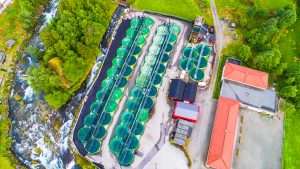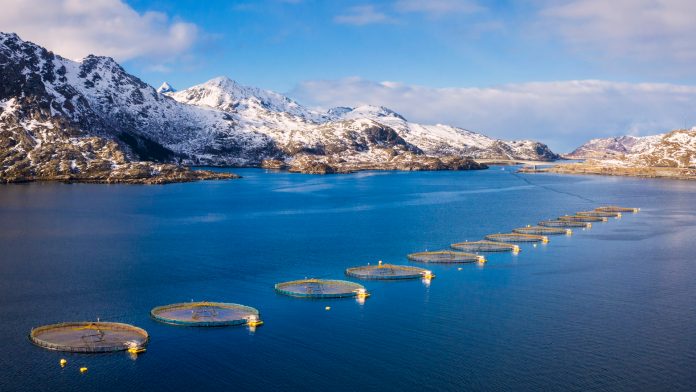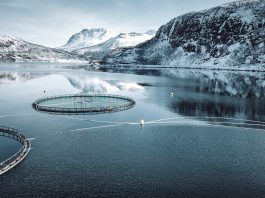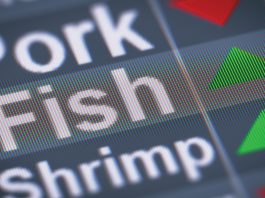The President and Executive Secretary of the European Fisheries and Aquaculture Research Organisations Association (EFARO), Dennis Lisbjerg and Luc van Hoof, respectively, spoke to The Innovation Platform about some of the challenges facing the blue bioeconomy.
With an ever-increasing demand for food at both the European and global levels, the blue bioeconomy, and aquaculture, will have a significant role to play moving forwards. And yet this will not be without its challenges, certainly in the context of sustainability and environmental protection. The European Fisheries and Aquaculture Research Organisations Association (EFARO) is well placed to comment on these challenges, particularly with regard to European waters, and The Innovation Platform spoke to EFARO’s President, Dennis Lisbjerg, and Executive Secretary, Luc van Hoof, about some of these areas.
“Aquaculture is a great way of obtaining protein with minimal impact on the climate and biodiversity (and, indeed, other parameters),” Lisbjerg began. “When you look at the need for more foodstuffs for the growing population from the aquatic perspective, fisheries have been stagnant for decades in Europe, which demonstrates that we are not going to be able to fish our way towards a solution; it will have to be produced, and it is here that aquaculture finds its place.”
Challenges and opportunities
Given the importance of aquaculture, it would perhaps make sense for the sector to be high on the priority list for future development, and yet, according to Lisbjerg, aquaculture has also stagnated in recent decades. And while the appetite appears to be there for developing the industry and embracing new technologies moving forwards, there are numerous hurdles currently hindering any real progress. Environmental protection is at the fore here, with some locations unable to support the amount of nutrients that would enter the water if aquaculture were to be established there, for instance. But as the EFARO team told TIP, there are also significant challenges when it comes to societal perceptions and acceptance: “Many people would agree that we need more aquaculture, but there is often a ‘not in my backyard’ mentality,” Lisbjerg explained.
To highlight challenges coming from other areas, van Hoof used Norway as an example: “Norway is one country where there has been more opportunities than in most; it is large with numerous fjord systems, and so potential new aquaculture sites have already been identified. The same is true of some parts of the Mediterranean area, where there are lots of sites which would work. However, aquaculture will also come up against other industries, such as tourism, which are hugely beneficial to many such places. As such, perhaps we need to begin to look at trade-offs,” he said.
Considering such challenges and given aquaculture’s potential to provide protein sources with less impact on biodiversity and other natural resources, there is now an increasing emphasis on developing recirculating systems so that aquaculture can be done on land. These systems enable the activity to be confined and all the parameters in and out of the system to be controlled, thereby minimising the impact on the local environment. And, of course, because these aquaculture systems are located on land, there is no conflict of interest with other activities in the marine space.
“Alongside this,” Lisbjerg went on, “many countries have agreed that there is a need for more offshore wind farms to boost the amount of renewables in the energy mix and to help contribute towards climate goals etc., and plans are now being drawn up to achieve that. However, the energy companies involved have also realised that they are not able to monopolise the ocean space in those areas; they need to somehow accommodate other uses. As such, there may be the possibility of including aquaculture here, and this is now being considered and researched further.”
Much of the knowledge needed to develop aquaculture in this sense has already been acquired, and so it is now very much a policy issue to outline how things will move forwards. “However, once this begins, new research topics will start to emerge and we will thus develop a better understanding of how to optimise processes and so on,” van Hoof added.
For Lisbjerg, the public perception of what aquaculture actually is also needs to be addressed. “For instance,” he told TIP, “if aquaculture is to work together with offshore wind farms, this will not necessarily involve the kind of salmon farming that we see in Norway today. It could be algae, or mussels, or oysters, or other fish that many people are not currently used to eating but which are a good source of protein and which work well in the specific environment. Of course, if we are to raise non-traditional fish species then we will have no experience in how to go about it in an optimal way, and so protocols for rearing the species will need to be established.”
Recently conducted research into why the aquaculture sector in Europe stagnated has argued that the main factor is a failure on the part of the licensing system, which can be extremely prohibitive regarding expanding aquaculture. Although, of course, public perception and the competition with other uses also play a role.
As van Hoof pointed out: “We should also keep in mind that, currently, two thirds of the fish consumed in Europe is imported. However, the world is beginning to change, not only in terms of a growing population but also with a population that is getting wealthier. There is evidence that wealthier people and nations consume more fish. As such, it is becoming increasingly likely that the nations who currently export their fish to Europe will actually start to consume them themselves. The danger, of course, is that Europe will not be able to fill the gap with its own aquaculture and fisheries if it does not expand. But it needs to do so sustainably, and it needs to address the significant challenges it now faces.
“European aquaculture should thus also begin to look at farming lower trophic level species in order to reduce environmental impacts. Efforts have been made, for instance, to turn salmon into vegetarians; but they are at the top of the food chain within their system, and so we are essentially going against nature, which has its challenges,” van Hoof concluded.
The importance of data
Data collection and scientific assessment is important when it comes to fisheries management and aquaculture development, and Europe has a great track record here, successfully collecting data and providing assessments on fisheries resources for decades.
Lisbjerg commented: “We have systems in place in Europe, for example, where we co-ordinate the fisheries research fleets to go out to pre-selected stations in areas such as the North Sea, the Baltic Sea, and in the Mediterranean in order to get a total picture of the waters. We then conduct assessments of the stocks in that region in order to provide advice on how much could be fished. That then goes into the political process – it is the politicians who decide whether or not to take that scientific advice into account and it is the politicians who decide who will be allowed to fish where and how much they will be able to take out of the waters.
“When we look globally, however, things are not as well developed, and there is a lot to be done in implementing systems like this in areas such as the high seas, where a lack of rules mean that stocks are being fished by anyone at any time, with no control on overfishing.”
Nevertheless, it is clear that the European system works, and there is momentum building behind a further utilisation of the data being generated. However, technology is also continuing to evolve with, for instance, new sensors continuing to be developed – fishing vessels now have many more sensors on-board than they had in the past. “As such, there is perhaps a need for the protocols that are currently in place to actually gather data as well as the way this data goes on to be utilised in our assessment of the state of the of the marine areas to be updated,” van Hoof posited.
A more adaptive management strategy would also be useful moving forwards. This would enable quotas to be established (and indeed updated) based on real-time data, rather than attempting to set a quota for the next quarter incredibly far in advance and based on limited and potentially out-dated information.

There is now an increasing emphasis on developing recirculating systems so that aquaculture can be done on land. These systems enable the activity to be confined and all the parameters in and out of the system to be controlled, thereby minimising the impact on the local environment
Genetic resources
The UN’s Food and Agriculture Organization (UN FAO) has highlighted the need for ‘coherent management and policy systems for the sustainable use and conservation of aquatic genetic resources’, given the rapidly growing field of genetics and biotechnology, and Lisbjerg explained that it is now becoming increasingly recognised that it is not only the species level that is important, but also the genetic pool. “Within the fisheries sector,” he said, “we don’t tend to look at, for instance, herring as a species. Rather, we look at stocks of herring that spawn in different areas. As such, we need to protect the different spawning areas for the different stocks, and we also need to ensure that we are not overfishing the stocks in the different places. That is, a quota isn’t made for herring; it is made for herring in certain areas, and that is essentially part of that same issue, in that we know that there are sub-populations with genetic differences, and so we have to ensure that we fish the right places at the right time so that genetic diversity is maintained.”
For van Hoof, it is important to understand that over the last 30 years there has been a shift from individual stock management to the management of groups of stocks, and the recent Marine Strategy Framework Directive actually looks at the entire ecosystem. “When this is compared to agriculture,” he explained, “it is clear that all marine policies have an ecosystem conservation perspective at the fundamental level, while those concerning agriculture do not.”
Lisbjerg added: “Indeed, and while there may sometimes be a disagreement about what is included in that and how things can be operationalised, at least marine policies have an ecosystem-based approach to management, and that is the approach we should certainly be following.”
Breeding species is something that Lisbjerg believes will help make aquaculture a much more successful and economically viable business. This is something that has been practised in agriculture for centuries: pigs, sheep, chickens, and cows have been bred by farmers to the point that they are now, genetically speaking, very different to their original ancestors; they grow much faster and much bigger, they produce more milk or meat or eggs, and so on.
And yet, when it comes to marine organisms, there are still the same varieties that have always been used, and very little has been done to develop them. “There is huge potential in doing that,” Lisbjerg said. “However, we also need to be careful not to make the same mistakes that have been made by our counterparts in agriculture where, for instance, essentially the same few strains of wheat are produced all over the world. This means that if they become susceptible to a certain disease then the global production of this crop is at risk, rather than just a localised strain. We need to avoid that happening in aquaculture by maintaining and utilising the variety in the genetic pool.”
Climate change
In the sea as on land, some species are beginning to move north as temperatures grow warmer, meaning that their original habitat becomes hostile. Genetic resources also have a role to play in tackling this, as they may make it possible to develop a better understanding of how aquatic resources will respond to changes in climate, and so which species will begin to move in search of more agreeable temperatures, which species will be able to adapt to their current environment, and so on.
“We are already seeing some fish stocks moving because of the effects of climate change,” Lisbjerg said. “And this can be a significant issue for those fish in inland waters, as they can’t move north in the same way as fish in the oceans.
“Nevertheless, it is also an issue in the seas: as some fish species move north because of warming temperatures – as well as other related issues such as ocean acidification – the traditional fisheries in some areas may also have to adapt or, indeed, barter new agreements with different countries further north so that they can follow the fish stocks as they move and continue to fish them.”
The fact that we also know very little about the habitats at sea, particularly the sea floor, which sustain the fish and all other invertebrates, is a specific concern because it is unclear whether the environments the fish are moving into are capable of sustaining them.
“When it comes to aquaculture, of course, the impact of climate change in this sense really depends on what type of system is being used. If it is a nature-based system, then it will be affected quite significantly. But if an on-land recirculation system is being used, which allows the inputs to be controlled, then the effects will be minimal,” van Hoof explained.
Vulnerability
Given that very little aquaculture in Europe uses on-land recirculation systems, European aquaculture is potentially more vulnerable to the effects of climate change.
“Of course,” van Hoof went on, “the natural circumstances in places like Asia certainly make them more conducive to (on-land) aquaculture than, for instance, the Netherlands. However, the salmon industry, which has boomed in recent years, often uses a nature-dependent system, especially in places like Norway, where the environment – fjords and open ocean space – is suitable. That being said, there is a limit on how many pens there can be in coastal areas, and as the industry grows so does the need for more fish, which is therefore resulting in an increasing shift to on-shore farms. Indeed, many salmon are grown to fingerling size in tanks on land before being put into pens at sea. And we are now seeing that the salmon are being kept for longer periods on land before being transferred, with some companies now developing ways to raise salmon completely in recirculated on-land farms.”
There are, however, problems in scaling such systems. But when they are overcome, such farms could, in principle, be located anywhere and, as previously discussed, they enable all parameters to be controlled and are almost unaffected by the impacts of climate change.
The future
Given the multifaceted challenges and indeed opportunities facing the sector, the European Fisheries and Aquaculture Research Organisations Association (EFARO) will continue to play a crucial role moving forwards. EFARO represents the fisheries and aquaculture research institutes in Europe that provide advice to the different European governments on things like quotas, and it will continue to do so while it simultaneously works to develop the aquaculture industry.
According to Lisbjerg, this will involve: “Exploring how food from the ocean can be made more sustainable; trying to predict the effects of climate change on fish stocks; and attempting to develop adaptive management systems based on newly-available data. We want the aquaculture industry to really unlock its potential by developing recirculating systems, enhancing breeding, ensuring that the right feed is available for the species we want to raise, and by making sure that the species in the aquaculture systems are diversified, and we will continue to aid the industry in every way we can to develop the blue bioeconomy.”
Dennis Lisbjerg
President
Luc van Hoof
Executive Secretary
European Fisheries and Aquaculture Research Organisations Association (EFARO)
+31 (0)317 487 218
efaro@wur.nl
www.efaro.eu
Please note, this article will also appear in the third edition of our new quarterly publication.









